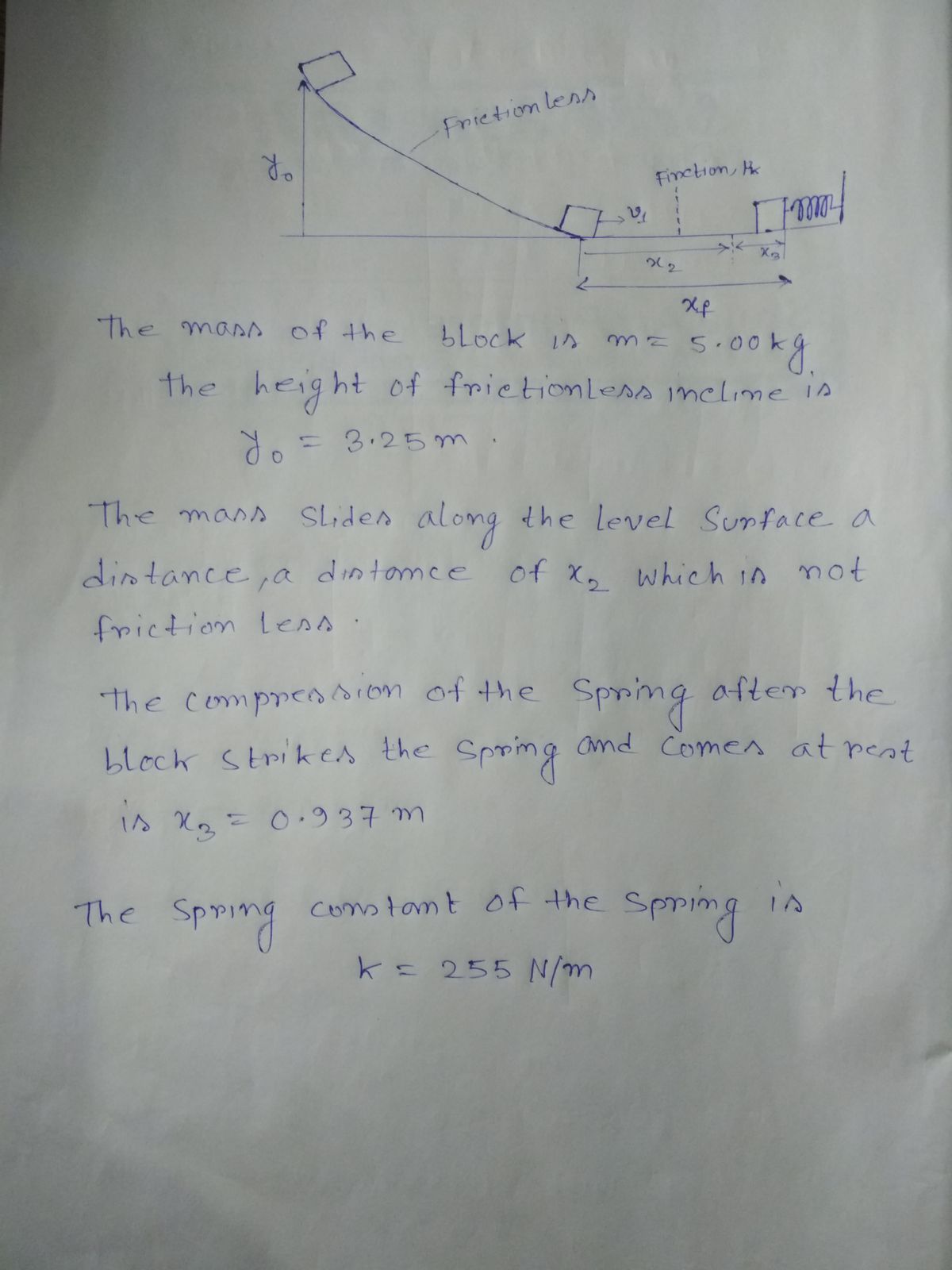As seen in Fig. 1, a 5.00 kg mass starts from rest at the top of a frictionless incline at heighty0= 3.25 m and slides to the bottom where it is moving at velocityv1. The level surface at the bottom of the incline is not frictionless. The mass slides along the level surface a distance x2 and then strikes a spring
As seen in Fig. 1, a 5.00 kg mass starts from rest at the top of a frictionless incline at heighty0= 3.25 m and slides to the bottom where it is moving at velocityv1. The level surface at the bottom of the incline is not frictionless. The mass slides along the level surface a distance x2 and then strikes a spring, coming to rest after compressing the spring by distancex3= 0.937 m. Thespring constant (stiffness) of the spring is 255 N/m. Use the bottom of the incline as the reference position for gravitational potential energy.
1. What is the mechanical energy of the system at the beginning before the mass is released?
2. What is the mechanical energy of the system when it reaches the bottom of the incline justafter being released?
3. What is the mechanical energy of the system when it stops (for an instant) as the spring reaches maximum compression?
4. How much work did the frictional force do on the mass as it slid to the right between thebottom of the incline and the point where it came to rest?
5. The spring expands pushing the mass back to the left. Find the maximum height that the mass will reach as it goes back up the incline.


Step by step
Solved in 3 steps with 3 images









